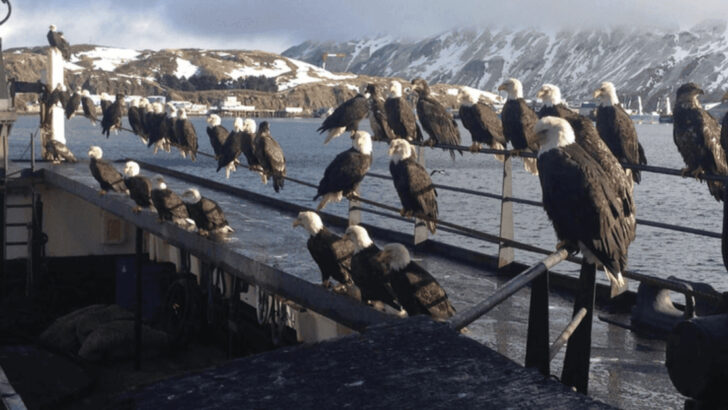Bald eagles rule the skies across America!
From Alaska’s wild frontier to the heartland’s rolling fields, these majestic birds inspire wonder wherever they soar. Their sharp eyes and powerful wings cut through blue skies, symbolizing freedom in its purest form.
Picture yourself on a windswept ridge, watching an eagle glide over endless terrain. These raptors thrive where nature’s strength meets beauty, turning rugged coasts and vast prairies into living sanctuaries. Their nests, perched on towering trees or craggy cliffs, stand as bold reminders of nature’s enduring spirit.
This guide reveals 13 U.S. states where bald eagles not only survive but flourish. Each state offers a unique story of environmental harmony, where local conditions nurture these noble birds.
Prepare for a journey through lands where every eagle flight echoes a celebration of wild freedom.
Alaska
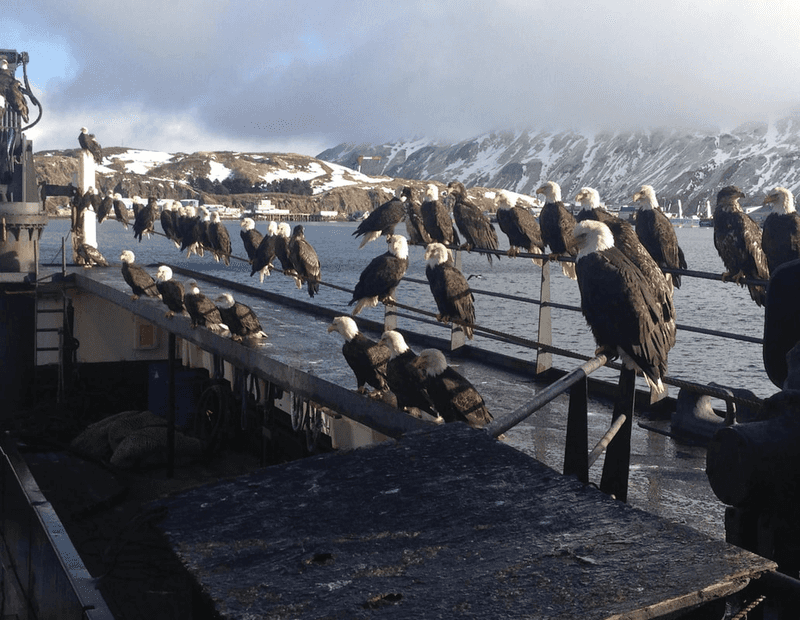
Alaska is a haven for Bald Eagles, providing extensive natural habitats that are crucial for their survival. The state’s vast wilderness offers an abundance of food resources, including fish from its many rivers and lakes.
With a low human population density, these majestic birds have large territories to roam freely. The rugged terrain and diverse ecosystems support a healthy prey population.
Conservation efforts, such as protected areas and regulated hunting, further enhance their thriving numbers. Alaska’s cold climate and pristine environment create an ideal setting for these resilient raptors, allowing them to flourish.
Florida
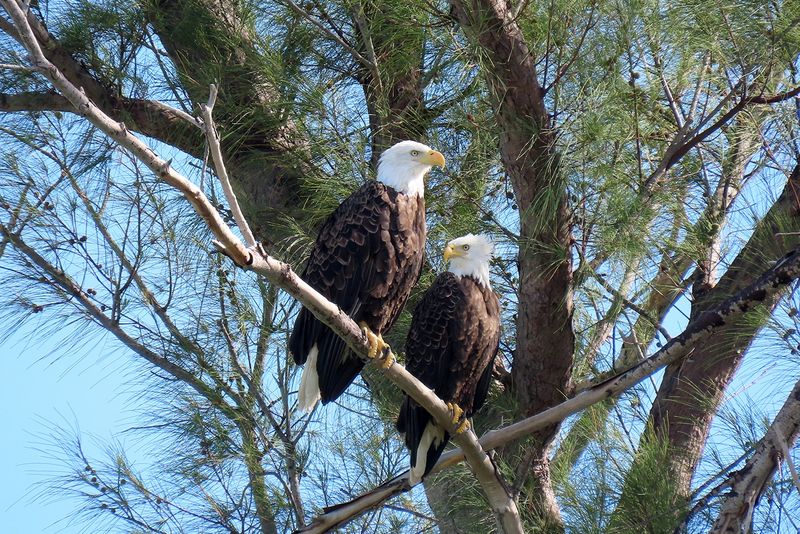
Florida’s wetlands and coastal regions are perfect habitats for Bald Eagles. The state’s warm climate and abundant water bodies provide ample food sources, including fish and small mammals.
Nesting sites in tall trees around lakes and rivers offer safety and accessibility. Conservation efforts, such as habitat protection and public education, play a significant role in the eagle population’s success.
Florida’s diverse ecosystems, from marshes to mangroves, support a wide variety of prey. These factors combine to make Florida a thriving home for these majestic birds, enhancing their survival and growth.
Minnesota
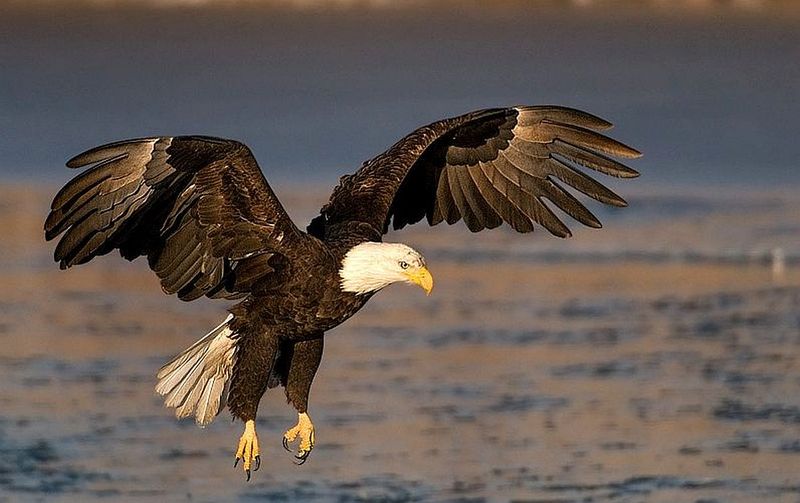
Minnesota’s extensive forests and waterways provide an ideal environment for Bald Eagles. The state’s diverse landscapes offer abundant food sources, including fish and small animals.
Nesting sites are plentiful in the tall trees along the numerous lakes and rivers. Conservation programs focus on habitat preservation and minimizing human disturbance, crucial for eagle success.
Minnesota’s commitment to environmental protection has led to significant growth in eagle populations. The state’s natural beauty, combined with proactive conservation efforts, ensures a thriving habitat for these majestic birds, allowing them to flourish in the region.
Wisconsin
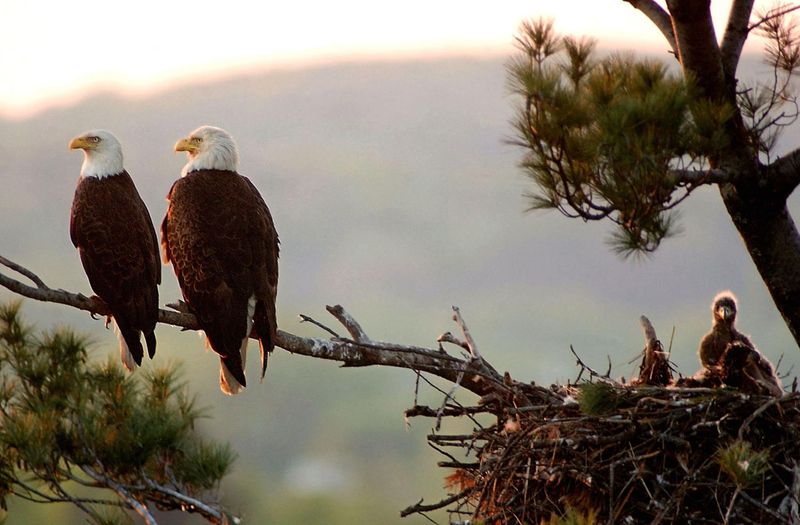
Wisconsin’s rivers and forests are perfect for Bald Eagles, offering rich food sources like fish and small mammals. The state’s commitment to conservation and habitat protection has been instrumental in eagle recovery.
Nesting sites in tall trees along water bodies provide safety and accessibility. Public awareness campaigns and habitat restoration enhance these efforts.
Wisconsin’s natural landscapes, from rolling hills to dense woodlands, create a thriving environment for eagles. Supportive policies and community involvement ensure that these magnificent birds continue to prosper in the state.
Washington
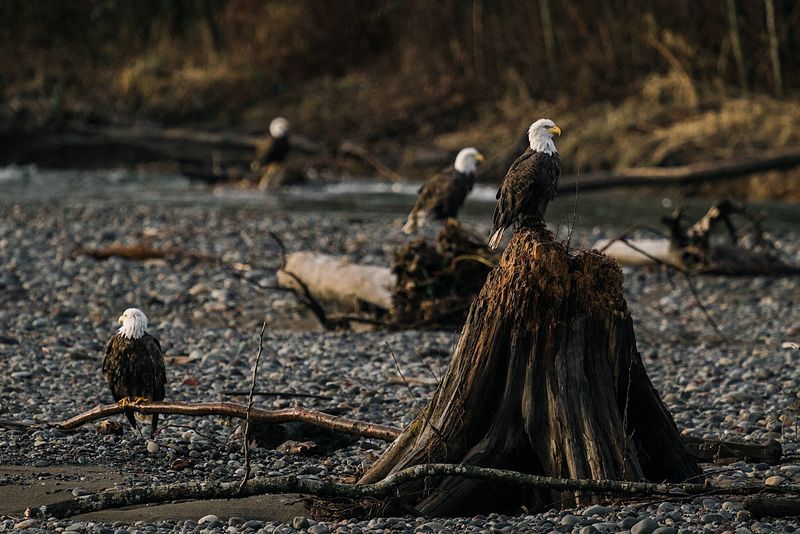
Washington’s coastal regions and forests provide excellent habitats for Bald Eagles. The state’s diverse ecosystems offer abundant food sources, such as fish and small animals.
Nesting sites in tall trees along the coastline and near rivers ensure safety and easy access to food. Conservation efforts, including environmental protection and public education, are crucial for eagle prosperity.
Washington’s commitment to preserving natural habitats and promoting sustainability has led to a flourishing eagle population. The state’s picturesque landscapes and proactive policies make it a welcoming home for these iconic birds.
Oregon
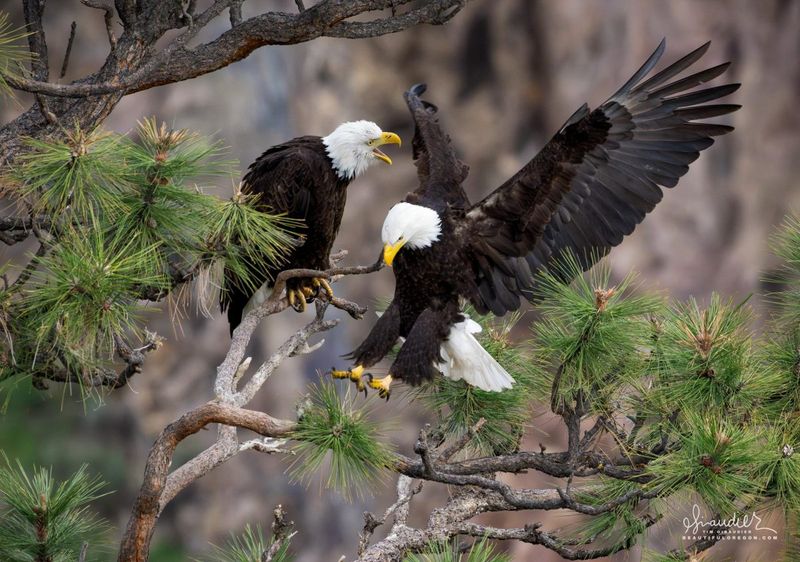
Oregon’s mountainous regions and dense forests provide an ideal home for Bald Eagles. The state’s natural beauty offers abundant food sources, including fish and small mammals.
Nesting sites in tall trees along rivers and lakes are plentiful, offering safety and accessibility. Conservation efforts focus on habitat protection and public awareness, supporting eagle recovery.
Oregon’s environmental policies and community involvement play a vital role in the thriving eagle population. The state’s commitment to sustainability ensures that these majestic birds continue to flourish in the region, enjoying the diverse and rich habitats available.
Michigan
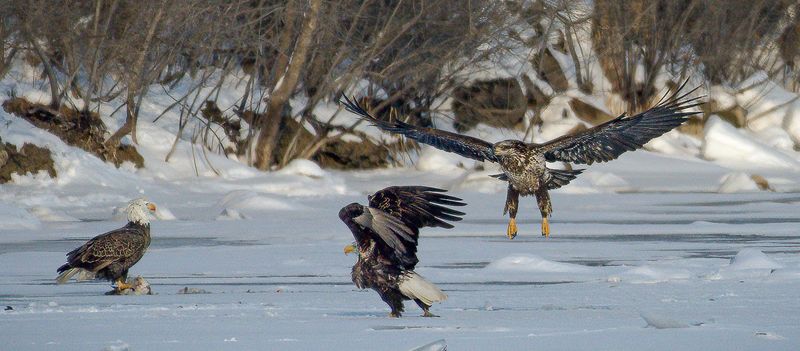
Michigan’s proximity to the Great Lakes provides Bald Eagles with vast hunting grounds and ample food sources. The state’s diverse landscapes, including forests and wetlands, support a healthy prey population.
Nesting sites in tall trees around lakes and rivers offer safety and accessibility. Conservation programs focus on habitat restoration and minimizing human disturbance, crucial for eagle success.
Michigan’s commitment to environmental protection and supportive policies has significantly boosted eagle numbers. The state’s natural beauty and proactive conservation efforts ensure a thriving habitat for these iconic birds, allowing them to flourish.
California
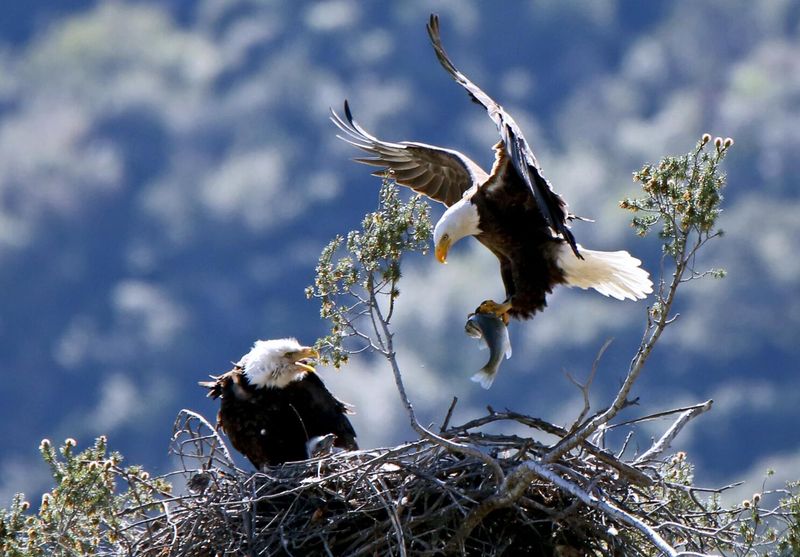
California’s diverse ecosystems provide an ideal environment for Bald Eagles. The state’s coastal areas and forests offer rich food sources, including fish and small mammals.
Nesting sites in tall trees along the coast and near rivers provide safety and accessibility. Conservation efforts, such as habitat protection and public education, are vital for eagle prosperity.
California’s commitment to preserving natural habitats and promoting sustainability has led to a flourishing eagle population. The state’s picturesque landscapes and proactive policies make it a welcoming home for these majestic birds, ensuring their continued success.
Texas
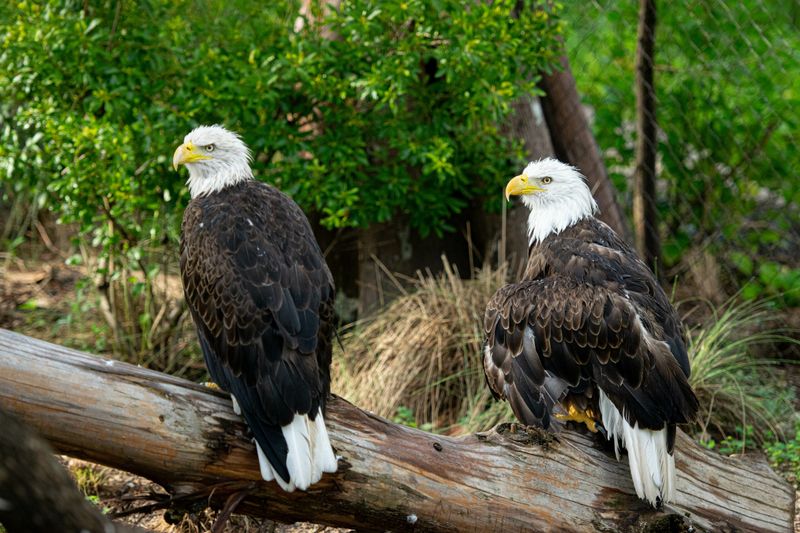
Texas’ vast landscapes and diverse ecosystems are perfect for Bald Eagles. The state’s rivers and lakes offer abundant food sources, including fish and small mammals.
Nesting sites in tall trees around water bodies provide safety and accessibility. Conservation programs focus on habitat preservation and public awareness, supporting eagle recovery.
Texas’ commitment to environmental protection and community involvement ensures a thriving eagle population. The state’s natural beauty, combined with proactive conservation efforts, creates an ideal environment for these majestic birds, allowing them to prosper and flourish in the region.
Missouri
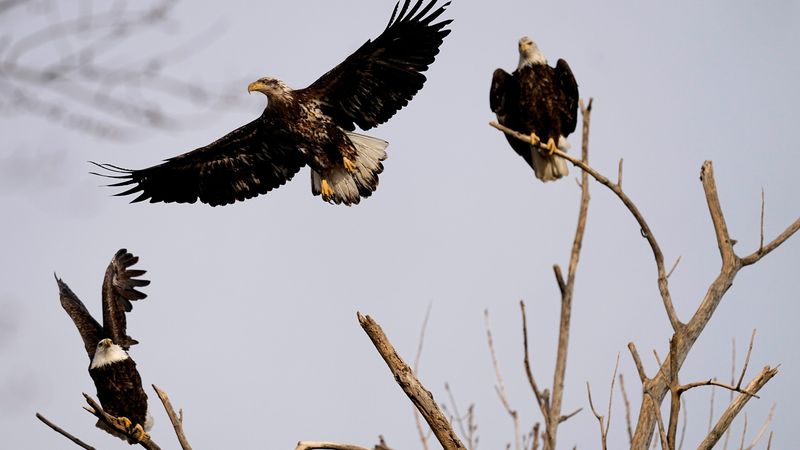
Missouri’s rivers and forests provide an excellent habitat for Bald Eagles. The state’s diverse landscapes offer abundant food sources, such as fish and small animals.
Nesting sites in tall trees near water bodies provide safety and accessibility. Conservation efforts, including habitat protection and public awareness, are crucial for eagle prosperity.
Missouri’s commitment to preserving natural habitats and encouraging community involvement has led to a flourishing eagle population. The state’s picturesque landscapes and supportive policies make it a welcoming home for these iconic birds, ensuring their continued success.
Arizona
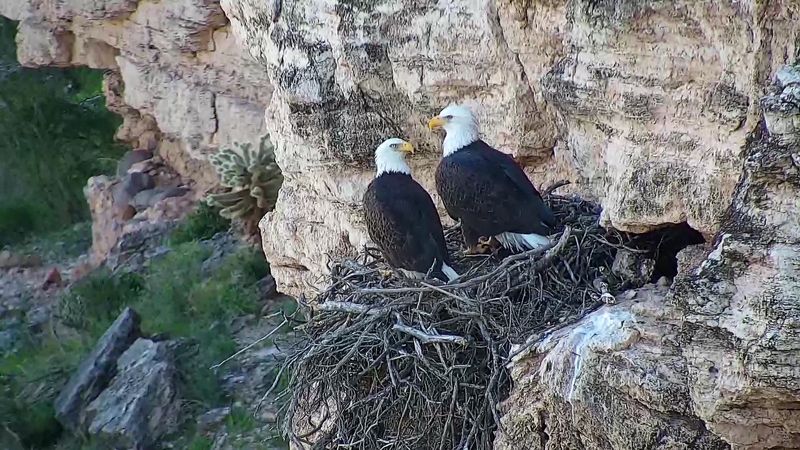
Arizona’s unique desert landscapes and river systems provide crucial habitats for Bald Eagles. The state’s diverse environments offer food sources like fish and small mammals.
Nesting sites in tall trees and cliffs near water bodies ensure safety and accessibility. Conservation efforts, such as habitat protection and public education, are vital for eagle success.
Arizona’s commitment to preserving natural habitats and promoting sustainability has led to a thriving eagle population. The state’s stunning landscapes and proactive policies make it an attractive home for these majestic birds, supporting their growth.
Montana
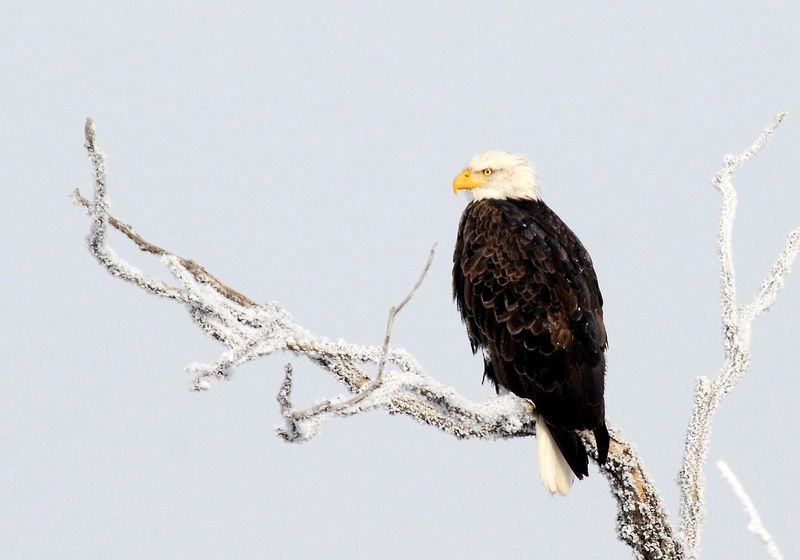
Montana’s expansive wilderness and diverse ecosystems provide an ideal environment for Bald Eagles. The state’s natural beauty offers abundant food sources, including fish and small mammals.
Nesting sites in tall trees along rivers and lakes are plentiful, providing safety and accessibility. Conservation programs focus on habitat preservation and minimizing human disturbance, crucial for eagle success.
Montana’s commitment to environmental protection and supportive policies ensures a thriving eagle population. The state’s breathtaking landscapes and proactive conservation efforts make it a welcoming home for these iconic birds, allowing them to flourish.
Idaho
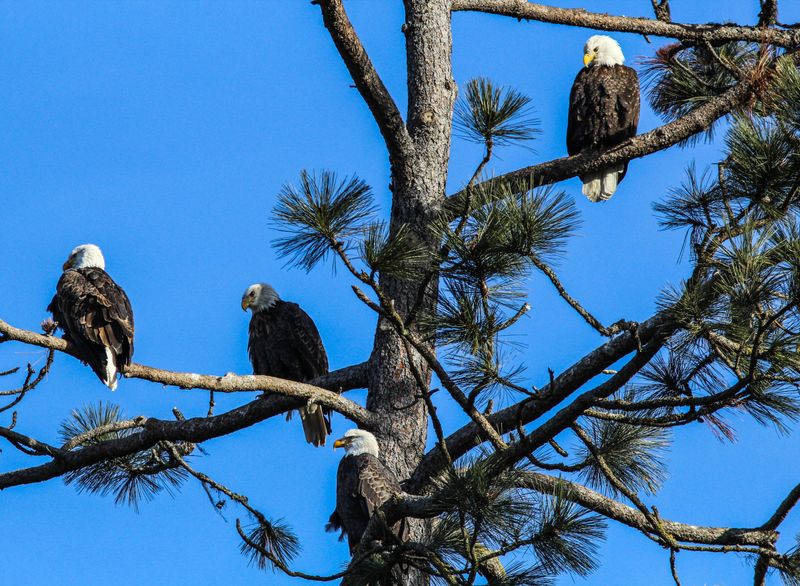
Idaho’s rivers and mountainous regions create a perfect habitat for Bald Eagles. The state’s diverse landscapes offer abundant food sources, such as fish and small animals.
Nesting sites in tall trees and cliffs near water bodies ensure safety and accessibility. Conservation efforts, including habitat protection and public education, are vital for eagle prosperity.
Idaho’s commitment to preserving natural habitats and promoting sustainability has led to a flourishing eagle population. The state’s picturesque landscapes and supportive policies make it a welcoming home for these majestic birds.

